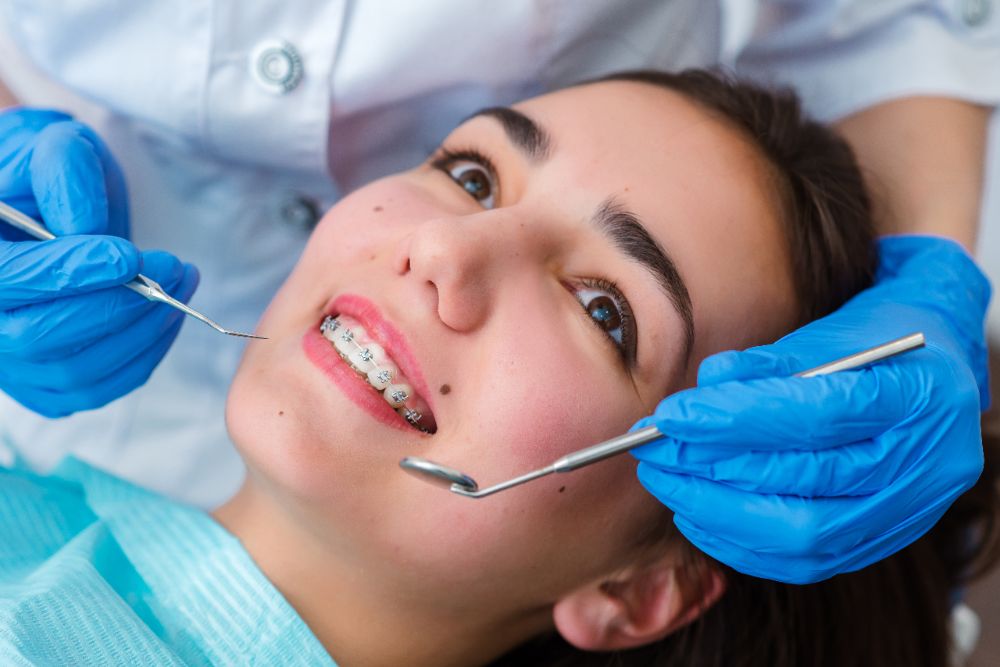The Benefits of Picking a Cumming Orthodontist for Your Braces and Aligners
Comprehensive Overview to Orthodontics Treatments for Dealing With Oral Misalignments
Comprehending the details of each procedure, including their systems, advantages, and prospective downsides, is important in making educated choices concerning one's orthodontic therapy. As we navigate through the detailed overview to orthodontic treatments for correcting dental misalignments, the elaborate information of each approach will certainly unravel, shedding light on the path toward a harmonious and useful dental alignment.
Orthodontic Procedures Summary

Along with clear aligners and typical braces, orthodontists may also advise various other treatments like headwear, palatal expanders, or retainers to deal with particular alignment issues (orthodontist). These treatments are customized to each patient's one-of-a-kind requirements and may include a combination of therapies to accomplish the desired outcomes. Routine changes and tracking are important parts of orthodontic treatment to make certain development is on track and to make any kind of essential modifications in the process. By undergoing orthodontic treatments, patients can not just achieve a straighter grin but additionally enhance their overall dental health and feature.
Standard Dental Braces: How They Work
When taking into consideration orthodontic therapies for dental misalignments, typical braces stand out as a time-tested approach for remedying teeth placing. Traditional dental braces consist of braces, cables, and bands that work with each other to apply continual pressure on the teeth, slowly relocating them into the preferred alignment.
One secret facet of just how traditional dental braces work is the procedure of bone remodeling. As stress is related to the teeth via the dental braces, the bone bordering the teeth is reshaped to sustain the new tooth positions. This remodeling is crucial for the lasting stability of the corrected positioning. Patients will certainly require routine modifications at the orthodontist's office to guarantee the dental braces remain to apply the appropriate stress for effective teeth motion.
Unseen Aligners: Disadvantages and pros
Unseen aligners provide a very discreet and hassle-free option to conventional braces for remedying oral misalignments. These clear, customized trays are essentially invisible when used, making them an enticing alternative for people seeking a more visually pleasing orthodontic treatment. One of the primary benefits of invisible aligners is their removability, allowing for simpler maintenance of oral hygiene compared to standard dental braces. People can remove the aligners before eating or brushing their teeth, reducing the risk of food obtaining embeded the device and streamlining the cleansing procedure.

Surgical Orthodontic Options
Surgical interventions in orthodontics present sensible options for dealing with intricate oral imbalances that may not be efficiently settled with conventional orthodontic therapies. While undetectable aligners and traditional braces can remedy several orthodontic issues, specific situations call for medical intervention to accomplish optimum outcomes. Surgical orthodontic alternatives are generally suggested for extreme malocclusions, substantial jaw discrepancies, and cases where the underlying bone structure requires alteration to attain correct alignment.
One common surgical orthodontic procedure is orthognathic surgery, which involves repositioning the jaws to fix practical problems such as problem speaking or chewing. This surgery is typically done in partnership with an orthodontist that aids straighten the teeth prior to and after the treatment. Surgical orthodontics might likewise involve procedures to expose influenced teeth, get rid of excess gum cells, or reshape the jawbone to produce a more unified face profile.
Prior to taking into consideration medical orthodontic choices, individuals go through a comprehensive evaluation to establish the requirement and possible advantages of such interventions. cumming braces. While surgical treatment may appear daunting, it can significantly boost both the function and aesthetic appeals of the smile in cases where conventional orthodontic therapies fall short
Retainers and Post-Treatment Treatment

Post-treatment care entails adhering to the orthodontist's guidelines carefully. This might consist of proper dental hygiene techniques, attending follow-up consultations, and wearing the retainers as suggested. Failure to abide by post-treatment care guidelines can lead to regression, where the teeth gradually return in the direction of their original placements. Consistent retainer wear, great dental hygiene, and routine dental exams are necessary for maintaining the results attained through orthodontic surgical treatment and making certain the long-term security of the dealt with dental positioning.
Final Thought
In conclusion, orthodontic treatments supply different options for correcting oral imbalances. Surgical orthodontic choices are offered for much more severe imbalances. Generally, orthodontic treatments can efficiently enhance dental health and wellness and aesthetic appearance.
As we browse through the detailed overview to orthodontic treatments for fixing oral misalignments, the complex information of each technique will unfold, losing light on the course toward a unified and practical dental placement. - cumming orthodontist
One of the most common orthodontic treatments is the use of braces, which are composed of metal braces and cables that use mild stress to slowly shift teeth right into the desired placement.When thinking about orthodontic treatments for oral misalignments, standard braces stand out as a tried and true method for correcting teeth positioning. In addition, undetectable aligners might not be appropriate for complex orthodontic problems that call for more substantial teeth movement, as they are typically suggested for moderate to moderate situations. Retainers are personalized orthodontic devices made to hold teeth in their aligners fixed settings after the conclusion of orthodontic treatment.